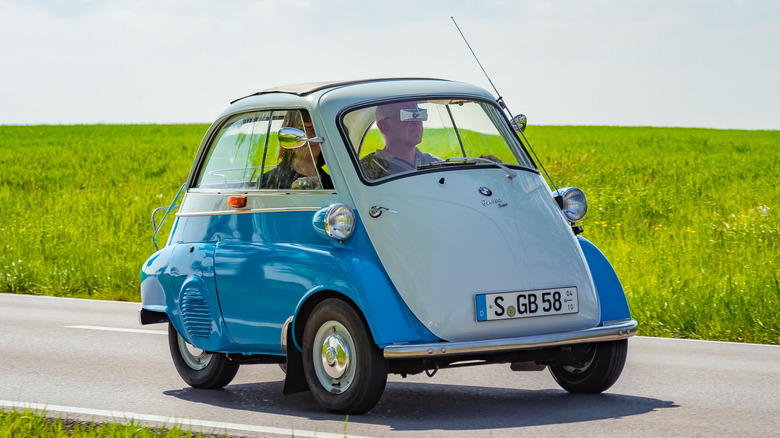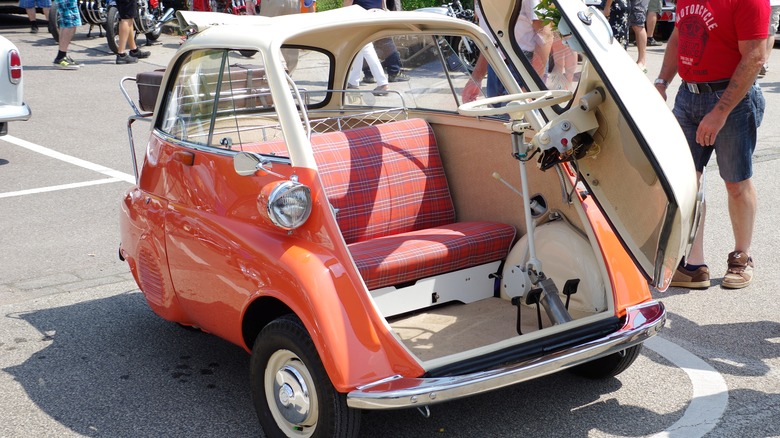How The Isetta Saved BMW From Bankruptcy
Since automobiles first began rolling off Henry Ford's assembly lines in 1913, the world has been fascinated with cars. In 1926, the Bayerische Motoren Werke AG, more commonly known as BMW, began its long and storied history of creating high-end luxury vehicles and motorcycles.
As successful as BMW has been, it found itself in financial trouble in the mid-1950s. It was teetering on the edge of bankruptcy because motorcycle production was faltering, and it was suffering from losses due to high production costs associated with its 503 and 507 models. According to Axel Klinger-Köhnlein, an expert at BMW Group Classic, "the number one priority was to put a car into production that would make us money right away."
The German-based company was desperate to get a new model into production that wouldn't cost a lot of time or money. BMW found exactly what it was looking for at — of all places — the booth of an Italian refrigerator maker at the 1954 Turin Car Show.
The bubble car that became an icon and saved BMW
Iso Rivolta not only made refrigerators but mini cars as well. It had a three-wheeled model on display called the "Iso Isetta," with a massive swinging door in the front that looked like a refrigerator door. Executives from BMW not only purchased the licensing rights for the Isetta but the production equipment as well. It began making the car immediately, with the first BWM Isetta 250s rolling off the production floor in April 1955, only a year after the auto show.
Until then, BWM was known for its luxury performance cars, but this was a vastly different type of vehicle altogether. The first models came with a modified 250 cc four-stroke engine pulled from its R25 motorcycle. That single cylinder was only capable of generating a mere 12 horsepower. While the German company kept the original Italian name, it added a fourth tire to its version, with the rear wheels only set 19 inches apart. This "microcar" was only 4.5 feet wide and 7.5 feet long, with a single door at the front for its two occupants — and only two occupants — to enter. The car was so small that people only needed a motorcycle license to drive it around.
BMW sold 10,000 cars in the first year of production and it became the very thing the company needed to stave off financial ruin. A total of 161,728 Isettas were sold during its 8-year run, making it the top-selling single-cylinder car in the world.

